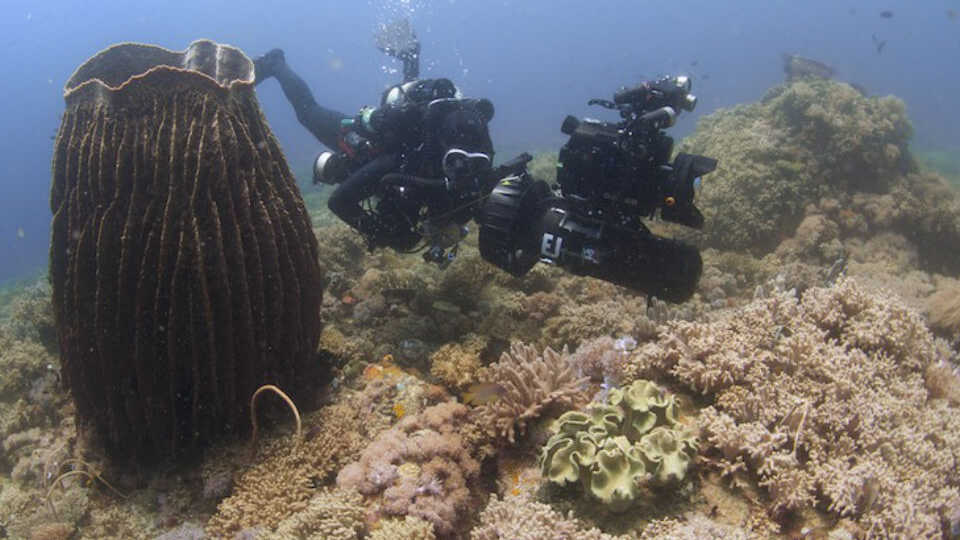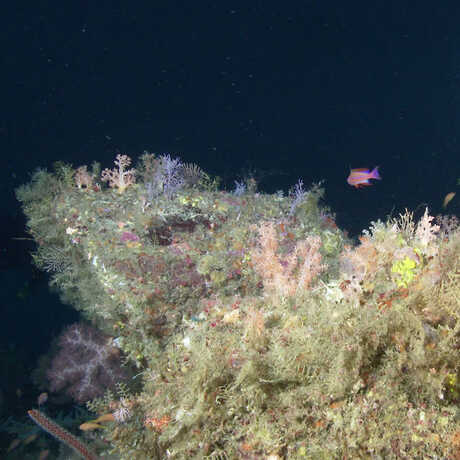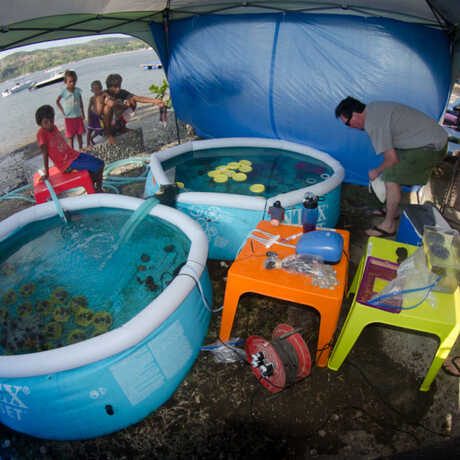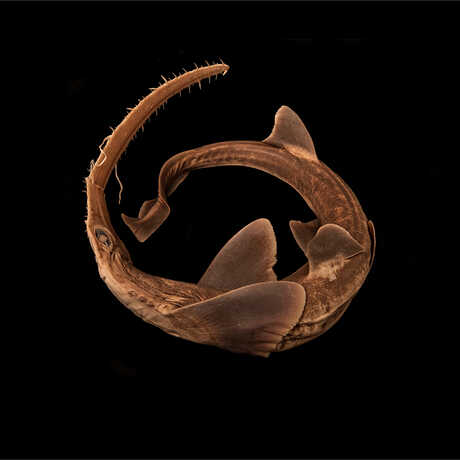The 2014 Philippine Expedition included the first-ever survey of the Coral Triangle’s “twilight zone,” defined as depths of 40 to 150 meters (or 130 to nearly 500 feet). Using cutting-edge, mixed-gas rebreather diving technology, Academy crews explored habitats no human had entered before. The results of these dives are expected to be extraordinary; previous twilight zone dives in other parts of the West Pacific have yielded new-species discoveries at rates of 4.2–11.2 per hour.
Twilight zone exploration does more than yield new species, however—it also helps to answer some fundamental questions about the relationship between these deep reef communities and the shallow-water habitats directly above. By collecting material for molecular sequencing, researchers will be able to begin answering questions about the Verde Island Passage twilight zone itself, as well as its deep-sea denizens.








